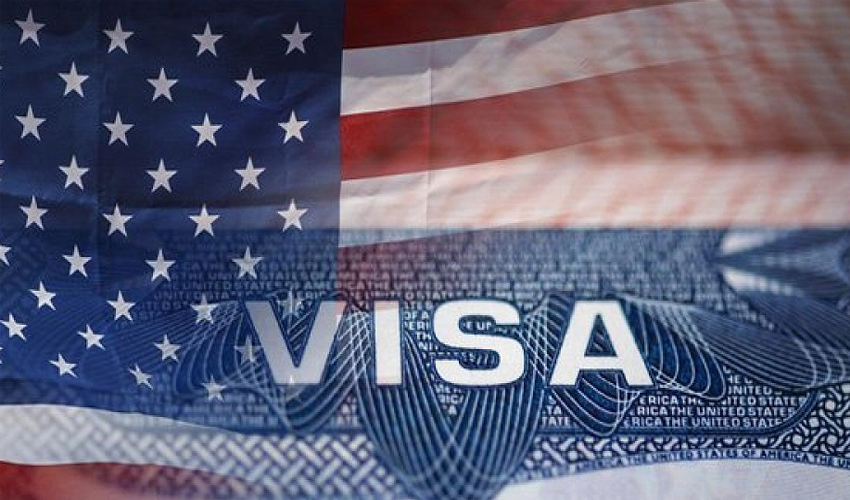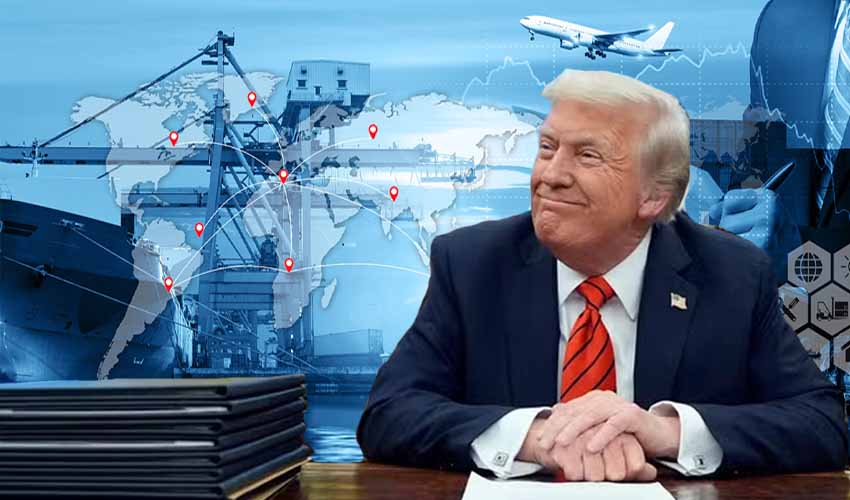In an increasingly interconnected world, cross border trade serves as an important conduit for economic interaction between nations.
This trade enables countries to exchange goods and services, stimulating competition and allowing innovation. Cross border trade is more than just an economic activity; it is a lifeline for many countries. It allows nations to diversify their markets, reduce dependency on domestic demand, and stabilize their economies.
According to the World Trade Organization, countries that engage actively in cross border trade often enjoy higher GDP growth rates and increased foreign direct investment (FDI). This trade fosters technology transfer, enhances productivity, and encourages innovation as companies adapt to compete globally. Moreover, it is also instrumental in job creation. For instance, trade liberalization has been linked to significant job growth in developing countries, where thousands of new jobs are created in industries that cater to international markets. Countries such as Bangladesh and Vietnam serve as exemplary models, showcasing how effective cross border trade strategies can propel economic growth.
Bangladesh has effectively utilized cross border trade to improve its economy, especially in the textile and garment sector. With a booming garment industry accounting for over 80% of its total exports, Bangladesh has strategically leveraged its competitive labor costs and favorable trade agreements, such as the Generalized System of Preferences (GSP) with the EU and the United States. This has not only led to substantial job creation—employing millions, predominantly women—but also positioned the country as the second-largest garment exporter globally. The government’s focus on developing special economic zones has further enhanced trade efficiencies and attracted foreign investment.
Vietnam, on the other hand, has emerged as a manufacturing powerhouse through its proactive approach to cross border trade. Its participation in multiple free trade agreements (FTAs), including the Comprehensive and Progressive Agreement for Trans-Pacific Partnership (CPTPP), has allowed it to integrate deeply into global supply chains. The electronics sector, for instance, has seen rapid growth, with companies like Samsung establishing extensive manufacturing facilities in the country. This strategic positioning has resulted in significant foreign investment, increased exports, and substantial job creation—over 1.5 million jobs in the manufacturing sector alone.
In contrast, Pakistan’s cross border trade infrastructure faces significant challenges that inhibit its economic potential. Despite being strategically located, the country’s trade facilitation processes are often cumbersome. According to the World Bank’s Ease of Doing Business Index, Pakistan ranks low in terms of trade logistics, with lengthy customs procedures and inadequate infrastructure at border points, such as Torkham and Chaman.
The country’s trade deficit has become a pressing concern for its economy, reflecting a persistent imbalance between imports and exports. In recent years, this deficit has widened alarmingly, with the Pakistan Bureau of Statistics reporting a trade deficit of approximately $39.5 billion in the fiscal year 2021-22, compared to $30.8 billion in 2020-21. This upward trend continued into 2022-23, with projections indicating a deficit of around $45 billion. A year-by-year analysis reveals a stark picture: in 2018, the deficit was about $37 billion, which ballooned by over 20% in just five years. In recent times, the trade situation looks better; however, such figures show the critical need for strategic interventions, particularly in boosting local production capabilities and tapping into cross-border trade opportunities.
To unlock the potential of cross border trade, Pakistan must prioritize infrastructure development. This includes investing in modern transportation networks—upgrading roads, railways, and ports to ensure seamless connectivity. Additionally, enhancing border facilities with technology-driven customs processes can significantly reduce delays and improve efficiency. Establishing better relationships with neighboring countries, such as India and Afghanistan, through dialogue and trade agreements can also facilitate smoother trade flows, opening new markets for Pakistani goods.
One promising avenue can be the revitalization of cottage industries and focusing on the agricultural businesses of Pakistan. For the Pakistani economy, agriculture serves as a backbone, contributing to approximately 20% of the country’s GDP. Despite its importance, the sector faces numerous challenges, including outdated farming techniques, limited access to markets, and a lack of quality control in production. These challenges hinder Pakistan's ability to compete in international markets, particularly in the realm of cross border trade, where quality and reliability are important.
However, one way to use agricultural businesses in improving the cross border trade situation is by employing modern technology to farming practices so that we can compete in the global market. Precision farming, the Internet of Things (IoT), and data analytics are just a few examples of how modern techniques can lead to improved yields and better-quality products. For instance, the use of drones for monitoring crop health can significantly reduce resource waste and increase efficiency. Additionally, IoT devices can provide farmers with real-time data on soil moisture, weather conditions, and crop growth, enabling them to make informed decisions that enhance productivity.
Furthermore, mobile applications are transforming how farmers access information and markets. By connecting farmers directly to consumers and exporters, these platforms can eliminate intermediaries, ensuring that farmers receive fair prices for their produce. The ability to monitor market prices in real time also allows farmers to make strategic decisions about when to sell their products, maximizing their profits.
As farmers adopt these technologies, the benefits will impact the cottage industries too, which rely heavily on agriculture for raw materials. Improved farming practices will lead to higher quality inputs for local artisans and producers, whether in textiles, handicrafts, or processed foods. This, in turn, improves the overall quality of products available for export, making them more competitive in international markets.
To capitalize on these opportunities, it is essential for policymakers to create an enabling environment that promotes technological adoption in agriculture. Investments in infrastructure, such as reliable internet access in rural areas, are crucial. Additionally, government initiatives that provide financial incentives or subsidies for adopting modern farming technologies can accelerate this transition.
Data from the Food and Agriculture Organization (FAO) highlights that countries that invest in agricultural technology see a significant boost in productivity and economic resilience. For instance, countries in Southeast Asia that implemented precision agriculture have reported yield increases of 15-30%. Pakistan can learn from these examples and strategically implement similar practices to enhance its own agricultural output. As we look towards the future, by capitalizing on this synergy, the country can pave the way for a sustainable and inclusive economic framework, transforming challenges into opportunities and positioning itself as a leader in the regional market.
According to the Pakistan Bureau of Statistics, exports to neighboring countries, including India, Afghanistan, and Iran, reached approximately $1.5 billion in the fiscal year 2022-2023. This figure reflects a year-on-year growth of 8%, demonstrating an upward trend in trade relations that could be further amplified. The World Bank estimates that increasing trade by just 10% could boost Pakistan’s GDP by as much as 1.5%, which translates to an additional $3 billion in economic activity.
Sectors such as agriculture, textiles, and handicrafts stand to gain significantly from enhanced cross border trade. For instance, Pakistan’s textile exports, which currently account for about 60% of total exports, could see a substantial increase if trade barriers with regional partners are reduced. A study by the Asian Development Bank indicates that improving trade facilitation and reducing logistics costs by 5% could result in an additional $1 billion in exports. Additionally, the establishment of special economic zones (SEZs) along border regions has the potential to create over 500,000 jobs in the next five years, further integrating local economies with international markets.
In light of his experience and working in the cross-border trade space (a stealth startup), Mohammad Awais Chaudhry shared with us his recent work and his thoughts on how significant cross-border trade is for Pakistan. "Cross-border trade holds immense significance for Pakistan, especially in light of the current economic crunch driven by rising energy costs, lack of effective policy framework by the government, rising taxes, and other structural challenges. By expanding trade beyond borders, Pakistan can increase share in the existing markets where it is already trading in volume, tap into new markets, boost exports, and improve its foreign exchange reserves, which are crucial for stabilizing the economy at this point in time.
With this vision in mind, I have been working on a venture that plays a pivotal role in this landscape. By leveraging AI to connect local manufacturers with demand in developed markets, we're enabling them to remain competitive, even amid global economic pressures. This not only helps the manufacturers thrive but also contributes to increasing Pakistan’s export capacity and diversifying its economy. Through smart logistics, data-driven strategies, and creating opportunities for scale, ventures like ours can help Pakistan build a more resilient economic future and alleviate some of the economic strain."
The positive economic ripple effects of increased cross border trade are not limited to direct financial gains; they also foster regional cooperation and stability. By enhancing trade relations, Pakistan can position itself as a key player in South Asia’s economic landscape, leading to a more resilient and diversified economy. However, despite the opportunities, cross border trade comes with its challenges. Regulatory hurdles, regional instabilities, and fluctuating trade policies can create barriers to entry for Pakistani goods. Complex customs regulations and the lack of harmonized standards can hinder the competitiveness of local products in international markets. Moreover, ongoing geopolitical tensions in the region can disrupt trade routes and deter potential foreign investors.
Therefore, Pakistan needs a comprehensive strategy. Establishing clear and consistent regulatory frameworks will be essential to build investor confidence and streamline processes. Enhancing trade facilitation measures, such as adopting technology in customs and logistics, can significantly improve the landscape for cross border trade. Moreover, encouraging partnerships with international organizations and participating in regional trade forums can help Pakistan navigate the complexities of global trade dynamics.
That said, cross border trade holds immense potential for Pakistan, especially when combined with the potential of its cottage industries. By investing in infrastructure, streamlining regulations, and promoting local craftsmanship, Pakistan can create a vibrant ecosystem that not only boosts economic growth but also preserves its cultural heritage. Embracing cross border trade is not merely an economic necessity; it is an opportunity for Pakistan to redefine its place in the global market, empowering its people and nurturing its industries. With the right strategies and commitment, the dream of a prosperous, interconnected economy can become a reality.



























